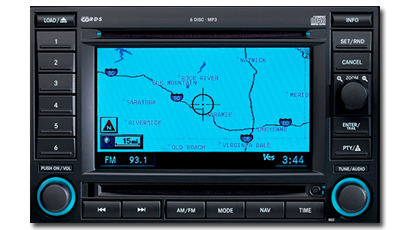|
|
 |
Knowledge Is Key
For Intelligent Decisions
Satellite Logic is a leading,
authoritative source of information in
the Satellite Industry. Located in the
heart of the Silicon Valley, Satellite
Logic provides one of the most
valuable and comprehensive
knowledge bases on the Satellite
market! This is a primary Worldwide
information center which enables our
clients to analyze, evaluate, inquire
and select their best tailored
solutions. Our company sets the
industry standards for targeted
buying leads, reflecting a dramatic
advance over traditional marketing
solutions.
|
|
|
 |

A GPS device is essentially a radio that helps locate where you are
and how to get to a preselected place. The GPS radio is a receiver
just like an AM or FM radio, except that it picks up timing signals from
24 satellites that orbit twelve thousand miles above our planet twice
a day. These satellites constantly transmit their position and the
exact time in orbit. The GPS radio 'listens' to the information from
three or more of the satellites and through triangulation of the
signals sent, it can determine speed, direction, elevation, and the
exact position of the receiver.
A GPS receiver typically comprises two functions: the radio front end
and the baseband digital signal processor (DSP). GPS radio receiver
design normally breaks down into two aspects: the top or system-
level requirements, such as chip gain and frequency planning, and
the individual circuit block performance. Traditional design
approaches use separate tools for system, DSP, and RF design. RF
IC designers typically must reconcile different modelling results of
analog, digital, and RF signals in high-density circuits.
The initial design and development of a GPS radio requires a careful
design process focused on the particular and specific attributes of
the target process technology. As a result, a methodology is needed
that would support frequency-domain and mixed-domain simulation
technologies; optimization and statistical design tools; and
additional device, system, and behavioral models. This methodology
would allow both a top down and bottom up approach so that
transistor level changes due to the different process models can be
transported to the system level. The GPS radio design provides the
radio front end for a GPS developed device, for use in mobile
communications such as handsets and personal digital assistants
(PDAs).

The ultimate measure of a GPS radio's performance is the design's
capability of tracking GPS satellites. Each GPS satellite transmits a
signal down to earth where it can be received by anyone with a GPS
radio receiver. The GPS radio signals are used by the receiver to
calculate exactly where that receiver is on the surface of earth.
Needless to say that radio signals arriving on earth from a satellite
are not harmful.
GPS radio is used for a wide range of applications like animal and
bird tracking. Birds and animals are tracked by scientists who attach
very small, lightweight transmitters to them. Imagine building a very
tiny GPS radio receiver combined with a very tiny radio transmitter
and attaching them to something which moves around. The GPS
receiver would receive signals from GPS satellites and calculate the
moving object's location. That location information then would be
turned over to the transmitter, which would send out a signal with
that information. The signal would travel up into the sky to be
received by a passing tracking satellite. That tracking satellite would
receive the signal with the location information and, from its very
high point above earth, relay it on to a station faraway on the
ground. At the ground station, the scientists who were in charge of
the tracking project would receive the information and place the
location of the moving object on a map. As the object moved around
over many hours and days, a track drawn on the scientists' map
would move around.
Obviously, with the GPS radio you can track cars, trucks, planes,
trains, human beings, animals, fish, or birds. In fact, you can track
anything to which you can attach a tracking transmitter. This
procedure requires that we know the distance to the satellites. The
distance is computed based on the amount of time it takes for a GPS
radio signal broadcast from a satellite to reach the receiver. The
satellites and the receivers both generate a psuedo-random code
at the same time. The satellite transmits this code, and after a
certain period of time (the time it takes the signal to travel through
space), the receiver picks it up. The receiver matches it up with its
own internally generated signal, and the amount the signals must
be moved to sync up equals the travel time between transmission
and arrival. This travel time is easily equated to distance.
Even marine GPS devices have the GPS radio in the antenna. The
timing of measuring the satellite signals is too critical for any cable
delays. Imagine that radio waves travel at 186,000 miles per second
and the GPS radio is determining travel distances in the range of
inches. That is a lot of zeros to the right of the decimal point.
In certain applications of GPS such as in hand-held GPS receivers,
the GPS radio is operated from a source of limited power capabilities
such as a battery power source. In such applications, it is highly
desirable to conserve power to extend the life of the batteries such
that the radio utilizing the GPS radio can be operational for as long a
period of time as possible to provide as much time as possible for
rescue operations to locate the GPS radio. In a GPS radio in
accordance with the principles of the invention, power management
is provided to extend the period of time during which the radio may
be operated by a battery. Power management is provided by
determining whether it is necessary to utilize the PY-code and
accordingly the SAASM module 149 when interfering signals and/or
spoofing is detected.
|
|
|
|
